LCD Light Fixture
By: Spatula Tzar

LCD Light FixtureBy: Spatula Tzar |  |
LCD monitors with bad capacitors are easy to repair, but there's nothing you can do about a cracked screen. Instead of simply recycling, broken monitors can be turned into light fixtures.
 |
Here is an overview of the circuitry inside an LCD monitor. This is a 2006 era monitor using cold cathode fluorescent tubes for the backlight. The CCFL inverter board is on the left. On the right is the main video controller. The long PCB at the top with the "Don't Touch" tape is the LCD driver, and the little board at the bottom is for the front panel buttons. Some monitors will light up indefinitely when powered on, but this one goes into sleep mode without a VGA signal present. Numerous attempts to keep the driver awake failed, so a more direct approach was used. |
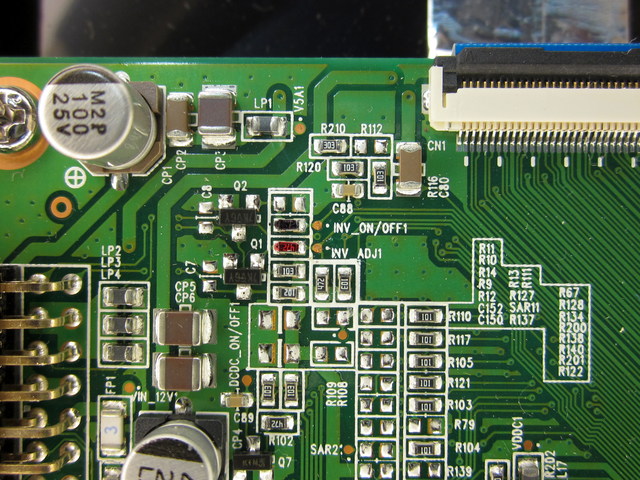 |
There are two interesting test points on the controller PCB: "INV_ON/OFF1", and "INV_ADJ1". Looking at the service manual, these seem to be connected to the only two pins controlling the backlight. The manual doesn't go into detail, but a bit of probing with an oscilloscope revealed the secret: on powerup, the "ON/OFF" point goes low, while the "ADJ" point goes high. These test points were chosen instead of directly connecting to the inverter board because the enable lines are a bit more complex than they seem. Some passive circuitry is used to enable a soft start, minimizing wear on the tubes. Connecting to these points allows the backlight to be controlled by plain CMOS logic levels. |
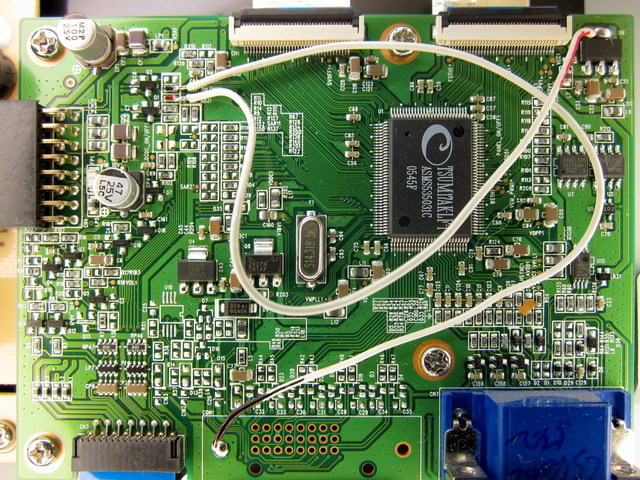 |
It was then a simple matter of permanently connecting these test points to their respective and negative power rails to enable the backlight. It would be best to cut the traces running to the processor to avoid fighting over the logic levels, but it hardly matters in this case. Even if the controller gets fried, the backlight should still work. In fact, the processor may be disabled entirely to reduce power consumption. At this point, the ribbon cables for the LCD and the menu buttons can be disconnected. |
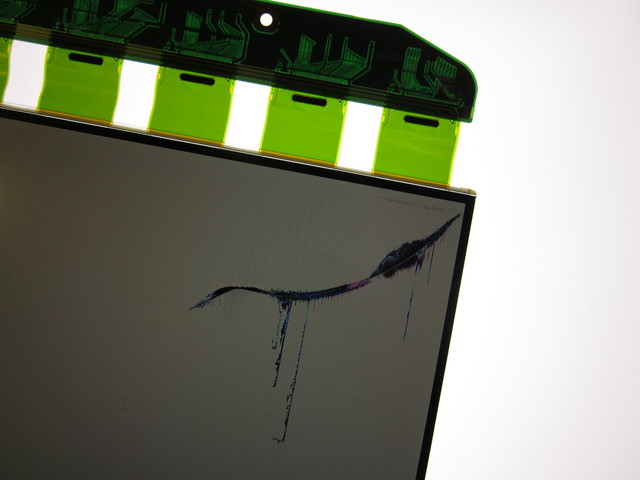 |
The LCD itself can be removed at this point. This particular unit suffered a fatal fracture. As seen in the picture, the polarising filters of an LCD absorb more than 50% of the light. Removing them doubles the radiant flux, making for a rather nice luminaire. |
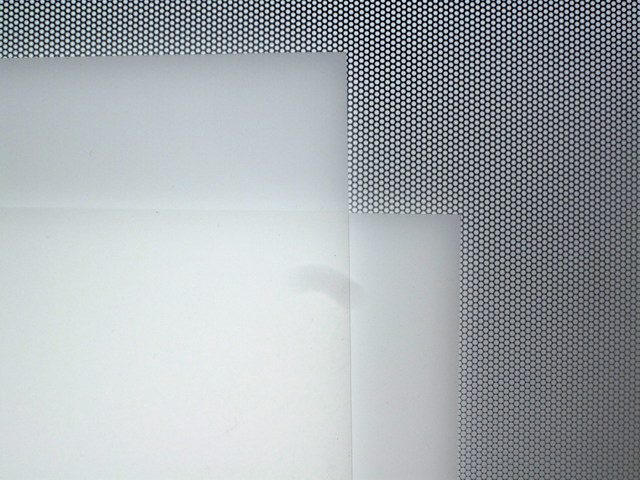 |
LCD monitors typically contain two sheets of diffusive plastic to create a very even backlight. They also serve to redirect light in a vector normal to the surface. This increases the apparent brightness when viewed directly, at the expense of the viewing angle. |
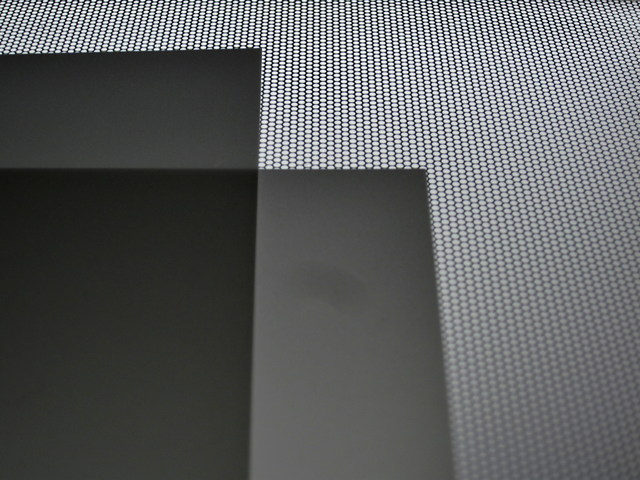 |
When viewed at on oblique angle, the diffusers actually dim the light significantly. This directionality is welcome for making spotlights, but since this is going to be used for an omnidirectional overhead light fixture, the diffusers were removed. |
 |
To mount the new light fixture to the ceiling, a plywood bracket was constructed. This particular monitor has a VESA mount which uses four M4 machine screws 75 mm apart. |
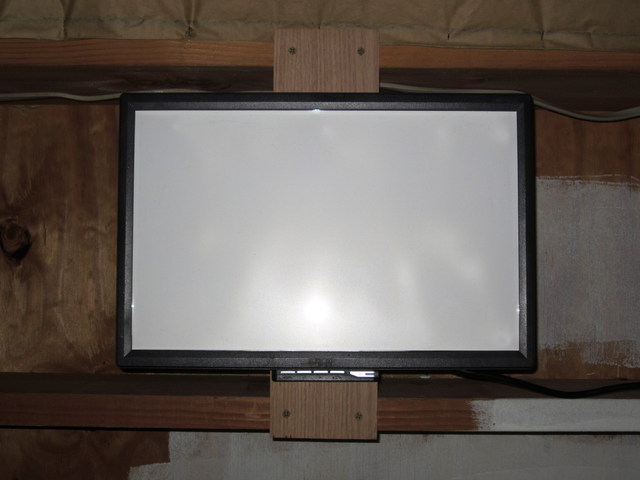 |
Here is the light mounted to the open ceiling in my laboratory. The IEC power cord is directly connected to the rest of the ceiling lights. A wood chisel made short work of the manufacturer's logo. |
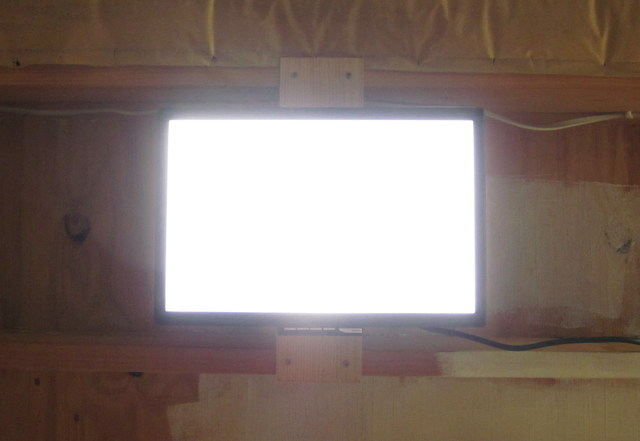 |
The light is quite bright. It illuminates a dark corner of my lab very well, and has a nice high colour temperature. The datasheet claims to have a brightness of 300 cd/m2. Given a 16:10 aspect ratio and a 484 mm diagonal, this equates to about 31.58 cd. Doubling this to account for the absent polariser gives about 63.17 cd, or approximately 794 lumens. Using an uncalibrated antique analogue foot-candle meter gives a reading of 1.2 lm/ft2 added to ambient illumination at a working distance of 126 cm, which equates to about 12.9 lux. |
The monitors draws 60 Watts, which equates to a luminous efficacy of 13.23 lumens per Watt. This sounds rather low, but it's the best calculation available without an integrating sphere, or at least a lux meter.
Bitcoin: 1KEWmWK3Sn9ToEHxhXmoXax6ycNGgLMfLv